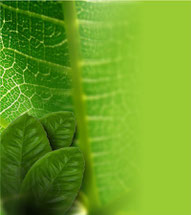
Topic III: Macromorphological characteristics of vegetative organs
Leaves
What are the leaves?

The leaf is the organ that synthesizes the food of plants, is a lateral formation of the stem and branches.
The leaves usually consist in two main parts: a stalk called petiole and a widened and flat part called limbo.
The color of the leaves limb is due to the presence of certain pigments, which in many cases their presence is determined by the intensity of sunlight.
The most common green color in leaves is due to chlorophyll, a pigment whose presence is essential for plants to produce sugars called carbohydrates from the water (leading from the ground) and carbon dioxide (from the air).
In this synthesis process plants release oxygen to the atmosphere. This process is extremely important to maintain the ecological balance of carbon dioxide´s presence, responsible for the greenhouse effect on the planet.
Not all leaves are green; many contain other pigments that mask the green chlorophyll, and some lack chlorophyll around the limbo or in parts of it. The leaves color change in the fall is almost always due to the decomposition of chlorophyll, which exposes these other pigments.
The leaves can modify by themselves to adapt to the environment they inhabit.
The leaves of many tropical forest plants are adapted to distill by its apex the moisture excess, while the cactus spines are adapted to prevent water loss.

 Pharmacognosy´s topics - Medicinal plants
Pharmacognosy´s topics - Medicinal plants


Write a comment